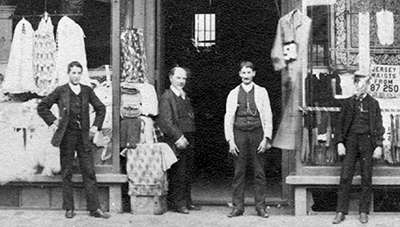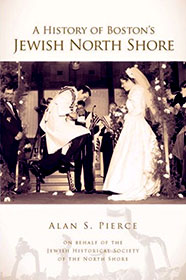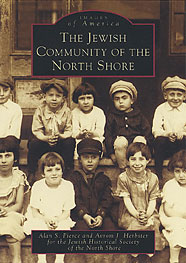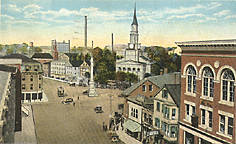Our History and Mission*
During the 1976 American Bicentennial, the North Shore Jewish Historical Society was conceived as a non-profit volunteer organization with the following purposes:
- To promote increased public awareness of Jewish history and accomplishments around the North Shore.
- To encourage scholarly study and collect and preserve primary evidence of this history.
- To sponsor meetings, publications and other forms of information about Jewish life along the North Shore.
In 2012 we realigned our mission and changed our name to the Jewish Heritage Center of the North Shore. We will continue to archive Jewish history along the North Shore. Our new name and activities reflect our commitment to connect the North Shore with the full spectrum of Jewish identity.
_______
*This organization is made possible by a generous allocation from the Jewish Federation of the North Shore.
Salud, Mazal, Bueno que Topas
The Sephardic Jewish Community of Peabody
Marjorie J. Short
In the Spring of 2009 I was assisting a California woman who was researching her extended family from Turkey. They had immigrated to Peabody, Massachusetts around the turn of the 20th century. Hardly anyone now is aware that there is a Jewish Sephardic Community in Peabody although they know there is a Congregation Tifereth Israel. There are four synagogues in Peabody today and to people in the area Congregation Tifereth Israel is just one of them. In fact, this one is Sephardic and was established there in 1922. Why in Peabody? Well, it was once the leather capital of the world, employing thousands of immigrants including those from Turkey and Greece.
Jewish Chelsea/Jewish America:
Dreams and Realities
A speech delivered at the Temple Emmanuel Chelsea Jewish History Exhibit by Norman H. Finkelstein on April 19, 2009
Let’s face it. There are two kinds of people in the world: those who grew up in Chelsea and those deprived souls who did not. We really believe that the Chelsea experiences and connections that bond us are so special they could not be duplicated anywhere else. And you know what? We are right. Chelsea is not just a defined geographic space, but a state of mind. Yet if we step back a minute to examine the history of Jews in America, our Chelsea story is but a microcosm of the larger American Jewish experience, but with our own distinctive differences.
...
From the Archives:
The Origins of Lynn’s Jewish Community
The following article is from a monograph written for the Jewish Historical Society of the North Shore in 1982 by Stephen G. Mostov, Ph.D.
The Jewish community of Lynn in 1885 was remarkable only for its lack of development. There had been Jews in America for over two hundred years, and by 1880 the national Jewish population exceeded 230,000. Yet no more than twenty-five families had ever found their way to Lynn. Lynn’s “first” permanent Jewish resident — a Russian immigrant named Simon J. Weinberg — settled in 1855, and opened a dry goods store. Weinberg was later joined by a nephew and brother-in-law. A few other Jews filtered into Lynn during the 1870s and early 1880s, so that by 1885 the total Jewish population was about fifty.

Solomon Wysanski, nephew of Simon J. Weinberg, stands in front of his dry goods store on Market Street in Lynn, c. 1870.
Few Jews settled in Lynn or other New England towns prior to 1885 for the same reasons that most other European immigrants also stayed away. Either Jews settled in Boston to be part of its large, insular Jewish community — where they felt comfortable socially and religiously, and could find work through friends and relatives — or they headed westward in search of greater economic opportunities. In the first systematic survey of the nation’s Jewish population, taken in 1876, it was estimated that there were 7,000 Jews living in Boston, but only 1,500 in the rest of Massachusetts. This contrasted with larger Jewish populations in states such as Ohio, Illinois, and even California, all of which were considerably farther away from the immigrants’ ports of entry.




